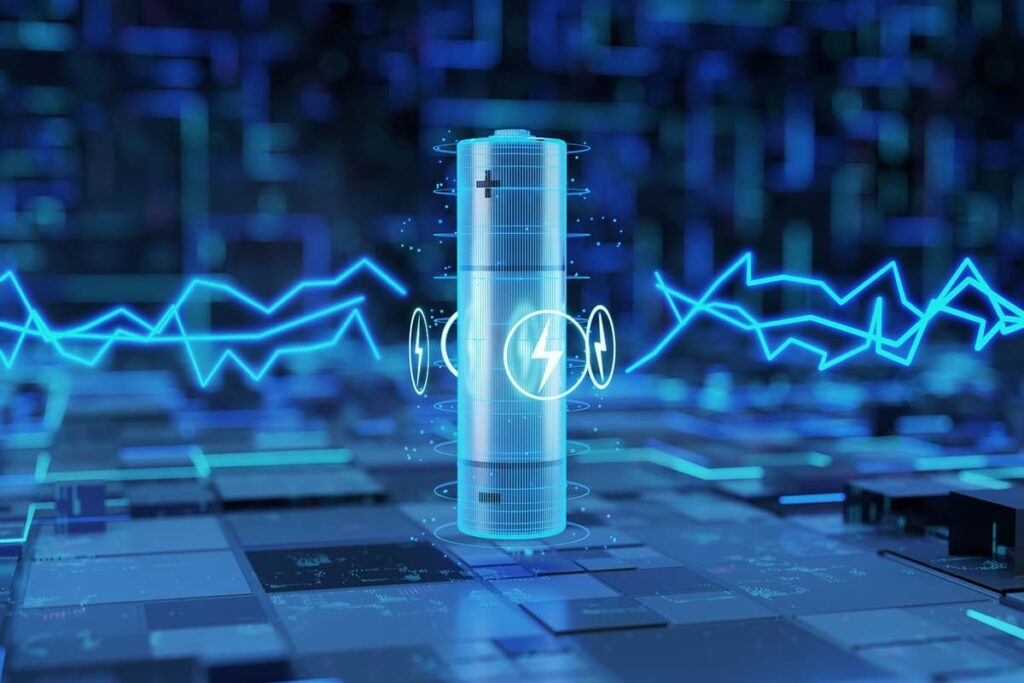Meet the Companies Doing Energy Storage for Space Travel
Table of contents

It seems everyone is chasing Elon Musk’s dream of electric vehicles in every garage, even as investors bet against the success of Tesla (TSLA) through short selling its stock. A big part of Musk’s strategy seems predicated on taking control of key parts of his supply chain, with energy storage obviously playing an outsized role. We noted that Musk has a big announcement coming later this year about energy storage in our recent article on how lithium battery technology continues to improve. While new battery tech remains focused on reducing costs while increasing capacity for EVs and other earthbound gizmos, a number of companies are developing innovations to boost energy storage for space travel.
The Need for New Energy Storage for Space Travel
Since the late 1950s when NASA and the former Soviet Union launched the first satellites, spacecraft have featured energy storage devices as the primary source of electrical power or as a means of storing energy for specific maneuvers or missions. The options have been mostly limited to batteries (including rechargeable ones) and capacitors. The former store energy chemically, while the latter store energy physically, in a form very much like static electricity. And a few missions over the years have toyed with using various fuel cell technologies, a system that generates electricity using only hydrogen and oxygen.
NASA and Musk have plans to go to Mars, frozen moons, and other distant locations in our solar system and beyond over the next few decades. Those future missions will require a host of innovations to survive extended exposure to outer space, including energy storage systems that may need to operate for months or years. The U.S. space agency even produced a 65-page report in 2017 called Energy Storage Technologies for Future Planetary Science Missions that discusses in detail (readable for the armchair rocket scientist in your life) what it will take to make it happen.

While there’s a lot to unpack, we can pretty much summarize NASA’s needs as requiring energy storage systems that are as simple and reliable as possible while still able to deal with the cold vacuum of space and intense radiation. Energy storage for space travel also needs to be compact and light, because volume and weight are at a premium when you’re launching these oversized high-tech tin cans into the void.
Companies Doing Energy Storage for Space Travel
Sounds like there may be a business opportunity here. That’s exactly the thought behind an energy storage company database put together by SpaceFund, an investment and research firm that specializes in the NewSpace economy. Quite a few of the players identified by SpaceFund were also involved in assembling that 2017 NASA report. Below is the full list from the database:
| Company | Type of Energy Storage |
| AVX | Capacitor |
| EaglePicher | Battery |
| EnerSys | Battery |
| Presidio Components | Capacitor |
| Saft (Total S.A.) | Battery |
| Space Vector | Battery |
| Amprius | Battery |
| Teledyne Energy Systems | Regenerative Fuel Cell |
| Giner | Regenerative Fuel Cell |
| NGK Spark Plug | Battery |
| ADA Technologies | Battery; Other |
| Infinity | Regenerative Fuel Cell |
| AlumaPower | Battery |
| he3da USA/Power Orbital | Battery |
| NDB | Battery |
| PolyCharge | Capacitor |
| Direct Kinetic Solutions | Battery |
| PolyMaterials APP | Capacitor |
Here’s SpaceFund’s 30,000-foot view of this emerging market:
Of course, with the rise of a more electric-based transportation and renewable solar energy industry here on Earth, the development of highly efficient, low cost, and high cycle energy storage systems may prove to be a major profit center for any space company able to solve the challenge. SpaceFund sees energy storage systems as a very interesting area of possible growth. The question will be do developments in terrestrial energy storage benefit space, or will research into storage systems for space lead to a breakthrough for markets here on the planet?
There’s way too many companies to cover in one article – and, frankly, some just aren’t that sexy, like AVX, which manufactures electrical components – so we’ll take a 30,000-foot look at the three major categories by highlighting some of the most interesting of the bunch.
Batteries and Energy Storage for Space Travel
The big advantage of batteries is that they’re generally capable of storing thousands of times more energy than a capacitor with the same volume. Batteries also can supply that energy in a steady, dependable stream. Not surprisingly, the majority of companies are working on battery solutions for space travel and aerospace in general, as well as industries as diverse as mining and medicine.
St. Louis-based EaglePicher has been around since well before the beginning of the Space Race; its batteries were aboard the Explorer 1 satellite in 1958. Hollywood would have you believe that Tom Hanks saved the Apollo 13 spacecraft, when in fact EaglePicher’s silver-zinc batteries provided electrical power for the life support and guidance control systems after a fuel cell failed. Today, the company’s various energy solutions help power more than 600 satellites currently in orbit. And, most recently, its suite of energy storage batteries helped power the latest Mars rover mission, from the Atlas V rocket to the spacecraft landing system to the robot itself.
EaglePicher is especially known for its thermal battery systems, which consist of a stack of series cells. Each cell is made from a cathode, an electrolyte separator, and an anode, which make up the triumvirate of standard batteries. The system also includes a pyrotechnic, thermal energy source for “igniting” the battery. After activation, the battery quickly reaches peak voltage and functions until a critical active material is exhausted or until the battery cools below the electrolyte’s melting point. Thermal batteries can sit around for more than 20 years without degrading, unlike those batteries you have shoved into your refrigerator shelf.

About 10 years ago, EaglePicher was acquired by another private company called OM Group, which produces specialty chemicals, advanced materials, and electrochemical energy solutions.
Another type of battery being considered for energy storage in the cold vacuum of space is the solid-state battery, which uses solid electrolytes instead of the liquid or polymer electrolytes to move charged particles called ions from one side of the battery to the other. That’s crucial for astronauts working on the surface of a place like the moon where temperatures can drop below minus 200 degrees Fahrenheit. A Japanese NewSpace startup called ispace, with plans to someday mine the moon for resources, is teaming up with another Japanese company, NGK Spark Plug, to test a solid-state battery on the lunar surface as early as next year. You can read more about the experiment here.
Capacitors and Energy Storage for Space Travel
Capacitors are usually not nearly as energy dense as batteries, but they can be charged and discharge energy much more quickly. There’s a hybrid capacitor that’s known as a supercapacitor or ultracapacitor that’s capable of storing more energy like a battery but with the charging capabilities of a capacitor. That’s what the companies in the energy storage database are working on.
For instance, there’s Tucson, Arizona startup PolyCharge, which was founded in 2017 by Sigma Technologies. The latter is a spin-off of General Electric (GE) that began life in 1985 as a developer of high-energy-density capacitors for the consumer electronics industry. PolyCharge was created specifically to commercialize a solid-state capacitor tech called NanoLam, which uses thin polymer materials to produce self-healing, high-voltage capacitors that are half the size and weight of current devices.

That’s particularly appealing for applications in everything from EVs to spacecraft. The company has raised an undisclosed amount of funding, with one high-profile investment coming in 2018 from Delphi Technologies, a $4.5 billion company out of India that designs and manufactures propulsion systems.
The polyamorous love fest with ultracapacitors is also embraced by Tampa-based PolyMaterials App, a startup developing a supercapacitor that will be capable of the higher voltages needed by hybrid motor vehicles, spacecraft, and large appliances. It claims the device can be recharged in seconds instead of hours, and delivers higher power than batteries. The company was a finalist at last year’s NASA iTech forum for supporting innovative technologies.
Regenerative Fuel Cells and Energy Storage for Space Travel
We’ve devoted quite a bit of digital ink to fuel cell technology over the years, including a recent guide to investing in fuel cell stocks. Fuel cells are configured similarly to batteries – consisting of an anode, a cathode, and an electrolyte layer – but rely on a renewable source of hydrogen that reacts with oxygen to generate continuous electricity. In a regenerative system, a fuel cell and an electrolyzer are combined to both produce and consume stored hydrogen (and potentially oxygen).

A renewable source, such as solar, is connected to the electrolyzer to produce hydrogen. The hydrogen is then stored within the system and consumed in the fuel cell to produce power when the renewable source is unavailable.
A Connecticut startup called Infinity (which helped supply the description and graphic of a regenerative fuel cell system) has been designing fuel cell systems since 2002, mainly through grants from NASA and other U.S. government agencies. It has tested its fuel cell technology for powering rovers, launch systems, crew modules, and even lunar bases. One of its biggest breakthroughs is the Advanced Passive Water Removal fuel cell, which uses capillary action to wick away the water produced from the system rather than a pump. By eliminating the pump, the fuel cell is lighter and more reliable, according to Infinity, and will help extend the range of surface operations for future rover missions.
Probably a more well-known name is Teledyne (TDY), a $12 billion manufacturer of electronics, software, and engineering solutions across a number of industries. Its Teledyne Energy Systems arm has provided a steady stream of power and energy storage solutions to NASA over the decades. For instance, the company was behind the nuclear engine that powered the Mars Curiosity Rover. It’s now working on the technology to mine water on the moon or even Mars to extract hydrogen and oxygen for energy systems like a regenerative fuel cell stack.
Conclusion
Earlier this year, we wrote about the possibility of transmitting energy to Earth from outer space. Some of those systems may also be used someday in conjunction with a new generation of these energy storage devices to power Star Trek-esque exploration of our itty bitty corner of the cosmos. Capt. Musk, who want to boldly go where no billionaire has gone before, certainly has the technical and financial wherewithal to incorporate energy storage systems into his SpaceX venture, either through his existing businesses or perhaps one or more of the companies we’ve highlighted here.
Sign up to our newsletter to get more of our great research delivered straight to your inbox!
Nanalyze Weekly includes useful insights written by our team of underpaid MBAs, research on new disruptive technology stocks flying under the radar, and summaries of our recent research. Always 100% free.




















